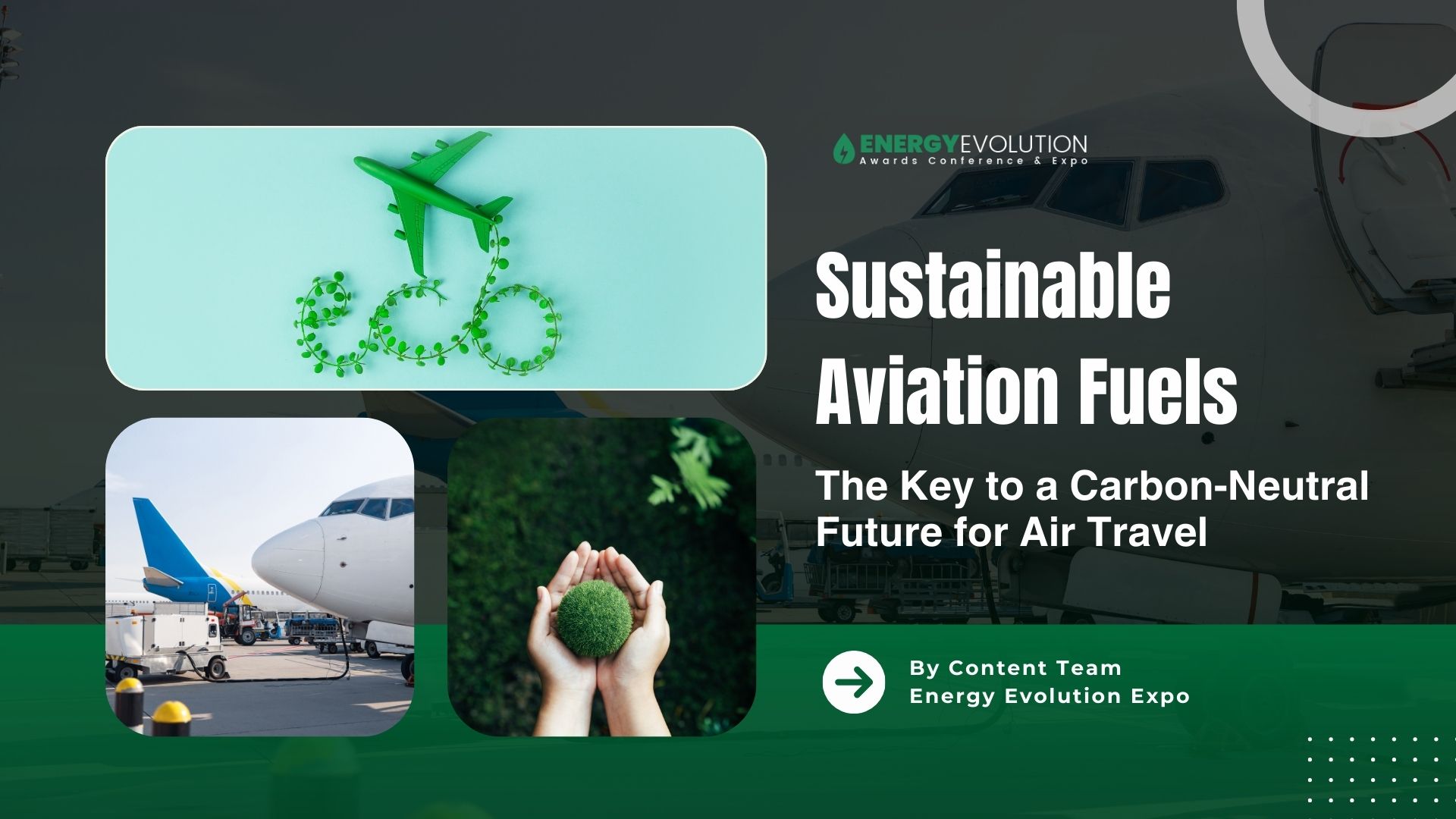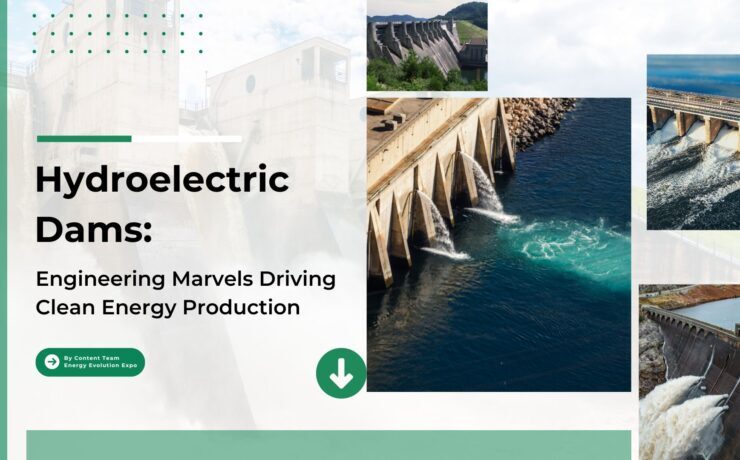Sustainable Aviation Fuels: The Key to a Carbon-Neutral Future for Air Travel

The aviation industry is a significant contributor to global greenhouse gas emissions, accounting for approximately 2-3% of the world’s CO2 emissions. As the urgency to address climate change intensifies, sustainable aviation fuels (SAFs) have emerged as a promising solution to reduce the carbon footprint of air travel. By utilizing renewable resources and innovative technologies, SAFs offer a pathway to achieving carbon-neutral aviation, aligning with global renewable energy targets.
What are Sustainable Aviation Fuels (SAFs)?
Sustainable Aviation Fuels (SAFs) are advanced biofuels designed to power aircraft with a lower carbon footprint than conventional jet fuels. SAFs are produced from renewable and sustainable resources, which can significantly reduce lifecycle greenhouse gas emissions. Unlike traditional fossil-based jet fuel, SAFs are derived from materials such as biomass, waste oils, municipal solid waste, and industrial off-gases.
Types of SAFs
1. Hydroprocessed Esters and Fatty Acids (HEFA)
HEFA SAFs are produced from fats, oils, and greases through a process called hydrogenation. This involves adding hydrogen to the feedstock to break down the fats and oils into hydrocarbons that are chemically similar to conventional jet fuel. HEFA is one of the most commercially mature SAF technologies and has been widely adopted in the aviation industry.
Neste, a leading producer of renewable fuels, supplies HEFA-based SAF to several airlines, including Lufthansa and Finnair.
2. Fischer-Tropsch (FT) Synthesis
Fischer-Tropsch synthesis involves converting feedstocks such as biomass, municipal solid waste, and industrial off-gases into syngas (a mixture of hydrogen and carbon monoxide). The syngas is then converted into liquid hydrocarbons through the Fischer-Tropsch process, resulting in a high-quality synthetic fuel suitable for aviation. Shell and British Airways are collaborating on a plant that will convert household and commercial waste into SAF using FT synthesis, aiming to produce over 70 million liters of SAF annually.
3. Alcohol-to-Jet (ATJ)
The ATJ process converts alcohols, such as ethanol and butanol, into jet fuel. The alcohols are dehydrated to produce olefins, which are then oligomerized and hydrogenated to form jet fuel. ATJ fuels offer a flexible production pathway and can utilize various feedstocks, including agricultural residues and dedicated energy crops.
Alcohols such as ethanol and butanol, typically derived from biomass which are then converted into jet fuels. LanzaTech, a company specializing in carbon recycling, has developed an ATJ process that converts industrial waste gases into ethanol, which is then transformed into SAF. This technology has been tested on flights by Virgin Atlantic.
4. Power-to-Liquid (PtL)
Power-to-Liquid SAFs are produced using renewable electricity to generate hydrogen via electrolysis. This hydrogen is then combined with captured CO2 to create synthetic hydrocarbons through processes such as Fischer-Tropsch or methanol synthesis. PtL fuels are potentially carbon-neutral, as they recycle CO2 and rely on renewable energy.
Carbon dioxide captured from the atmosphere or industrial sources, combined with hydrogen produced via electrolysis using renewable electricity undergo electrolysis to create hydrocarbons. The German company Sunfire is developing PtL technology to produce synthetic aviation fuel from CO2 and water using renewable electricity, contributing to Lufthansa’s efforts to reduce its carbon footprint.
Examples of Application
KLM Royal Dutch Airlines
KLM has been a pioneer in the adoption of SAFs, operating the world’s first commercial flight using biofuels in 2011. The airline has since committed to using a significant percentage of SAFs in its operations and has partnered with fuel producers to secure a steady supply of SAF.
United Airlines
In 2019, United Airlines operated the first commercial flight with passengers using 100% SAF in one engine. The airline has invested in the development of SAF production facilities and aims to reduce its greenhouse gas emissions by 50% by 2050.
British Airways and Velocys
British Airways, in partnership with Velocys, is developing a plant in the UK to produce SAF from household waste. This initiative aims to convert waste that would otherwise go to landfill into jet fuel, significantly reducing the carbon footprint of air travel.
Qantas
Qantas has made significant investments in SAF, including a partnership with Agrisoma Biosciences to use carinata, a type of mustard seed, as a feedstock for biojet fuel. Qantas completed its first SAF-powered flight from the United States to Australia in 2018, demonstrating the viability of renewable fuels for long-haul flights.
Alaska Airlines
Alaska Airlines has collaborated with Gevo Inc. to integrate ATJ fuel into its operations. In 2016, Alaska Airlines conducted the first commercial flight using ATJ fuel derived from renewable corn. This initiative underscores the airline’s commitment to sustainable aviation.
How SAFs are Helping to Achieve Renewable Energy Targets
1. Reduction in Lifecycle Emissions
SAFs can reduce lifecycle greenhouse gas emissions by up to 80% compared to conventional jet fuel. This substantial reduction is achieved through the use of renewable feedstocks and sustainable production processes, contributing to global emissions reduction targets.
2. Diversification of Energy Sources
By utilizing a variety of feedstocks, including waste materials and renewable electricity, SAFs help diversify the energy mix for aviation. This reduces dependency on fossil fuels and aligns with broader renewable energy targets aimed at increasing the share of renewable energy in the global energy supply.
3. Promotion of Circular Economy
The production of SAFs from waste materials supports the principles of a circular economy by recycling waste into valuable fuel. This not only reduces emissions but also minimizes waste, contributing to environmental sustainability goals.
4. Policy Support and Industry Commitments
Governments and international bodies are increasingly supporting the development and adoption of SAFs through policies, incentives, and mandates. For example, the European Union’s Renewable Energy Directive (RED II) sets targets for renewable energy use in transport, including aviation. Industry commitments, such as the International Air Transport Association’s (IATA) goal of achieving net-zero emissions by 2050, further drive the adoption of SAFs.
Sustainable Aviation Fuels represent a critical component of the aviation industry’s strategy to achieve carbon-neutral growth and meet renewable energy targets. By leveraging renewable resources and innovative technologies, SAFs offer a viable pathway to significantly reduce the carbon footprint of air travel.
While challenges remain in scaling up production and reducing costs, continued investment, policy support, and industry collaboration will be essential in realizing the full potential of SAFs and paving the way for a greener future in aviation. We need to keep up with all recent innovations to reap maximum benefits and to facilitate a better understanding of the latest developments and trends in the Renewable energy Industry, various Conferences and Expos, which bring Industry leaders together, serve as an all-inclusive platform.
The Energy Evolution Awards, Conference, and Expo organized by Next Business Media is making its debut in Spain in 2025. It will be a leading forum dedicated to honoring excellence in Energy Technology, showcasing innovations, and fostering collaborations. The events unite industry leaders, and visionaries to explore the latest advancements, tackle key challenges, and shape the future of Energy.
The Energy Evolution Awards, Conference, and Expo will celebrate outstanding achievements, promote sustainable practices, and drive the Energy Industry forward into a technologically advanced sustainable era. Energy Evolution Awards, Conference, and Expo will be a platform for cultivating innovation and shaping a brighter, more efficient energy landscape.






